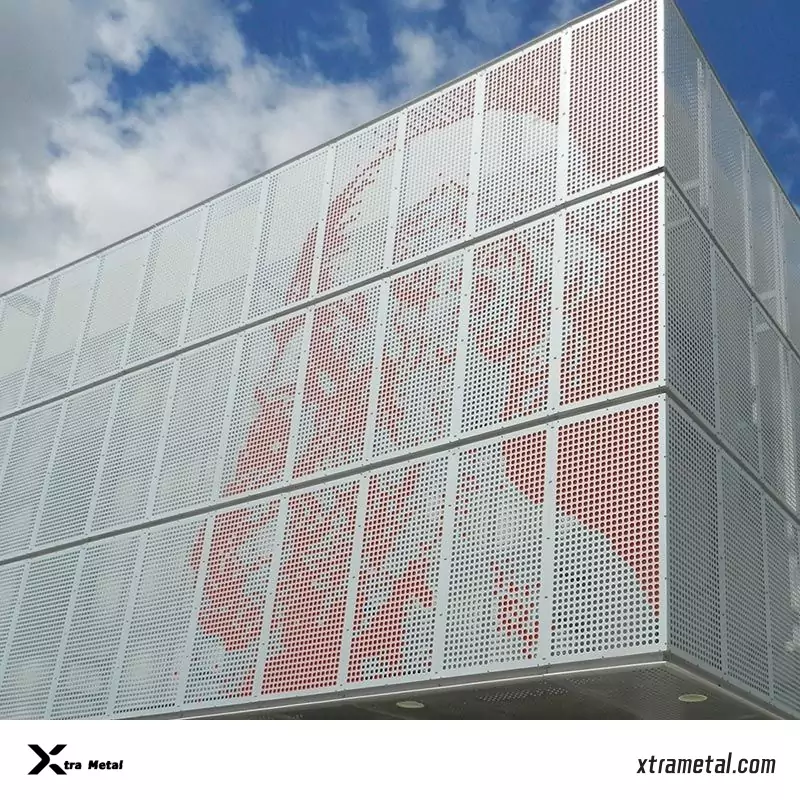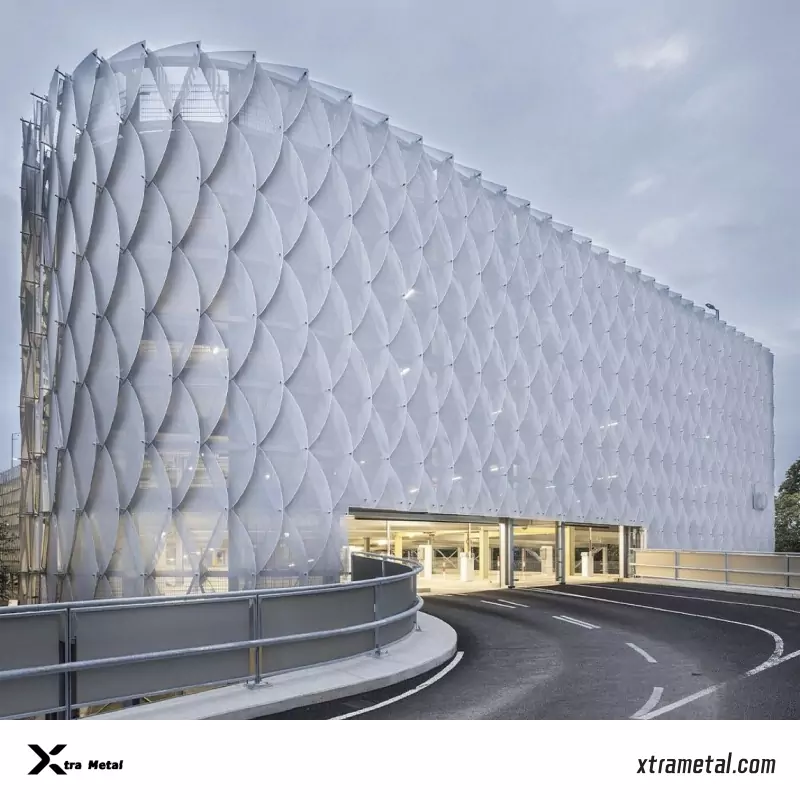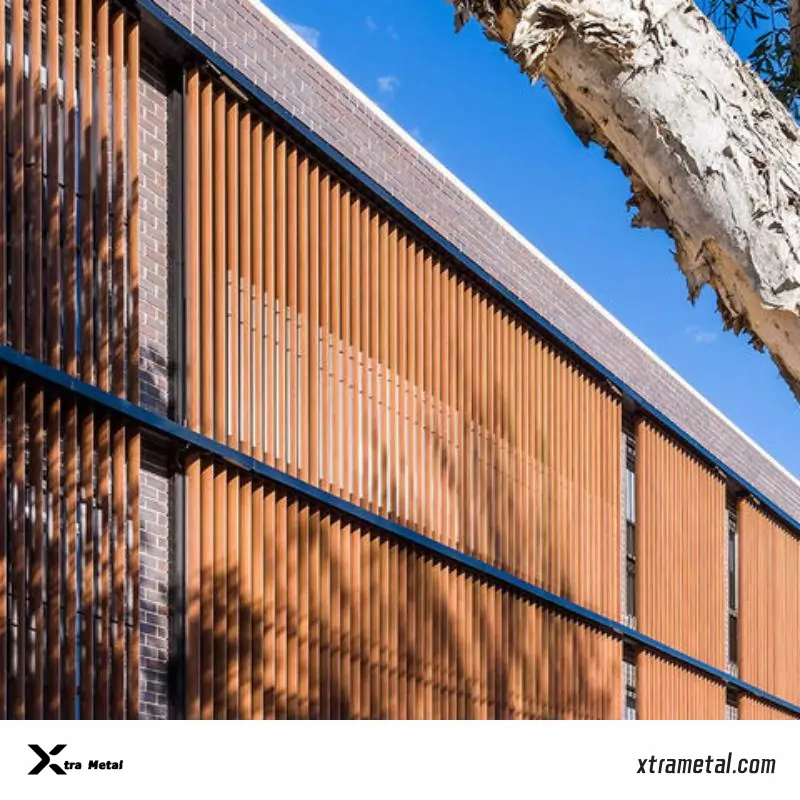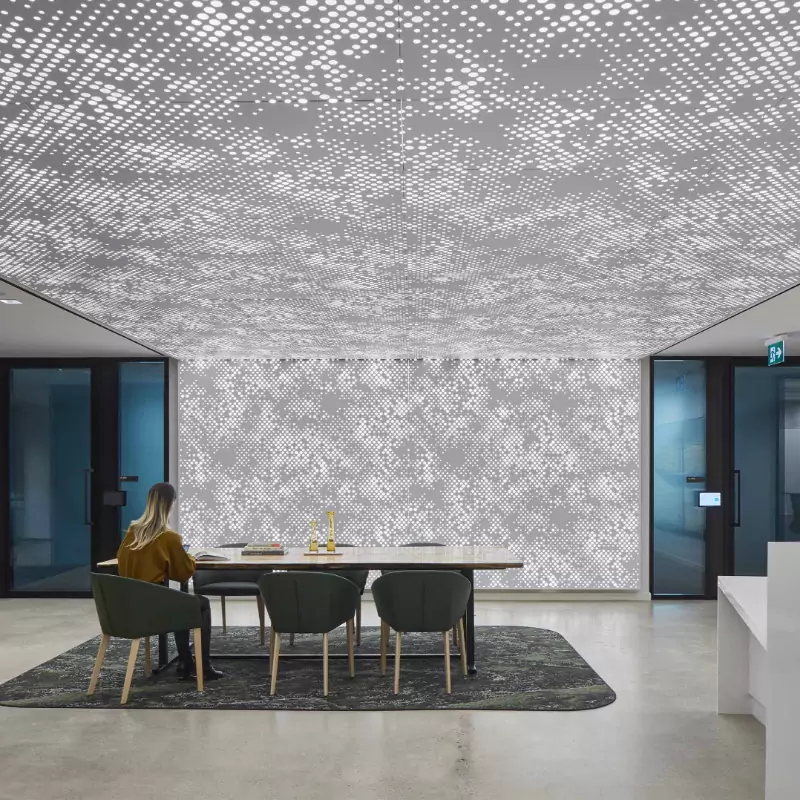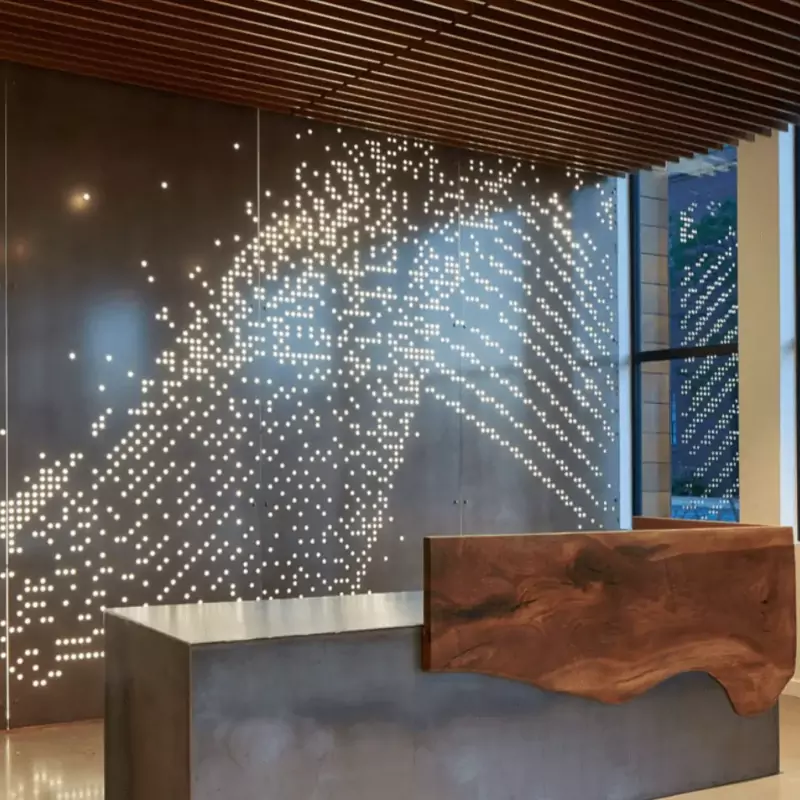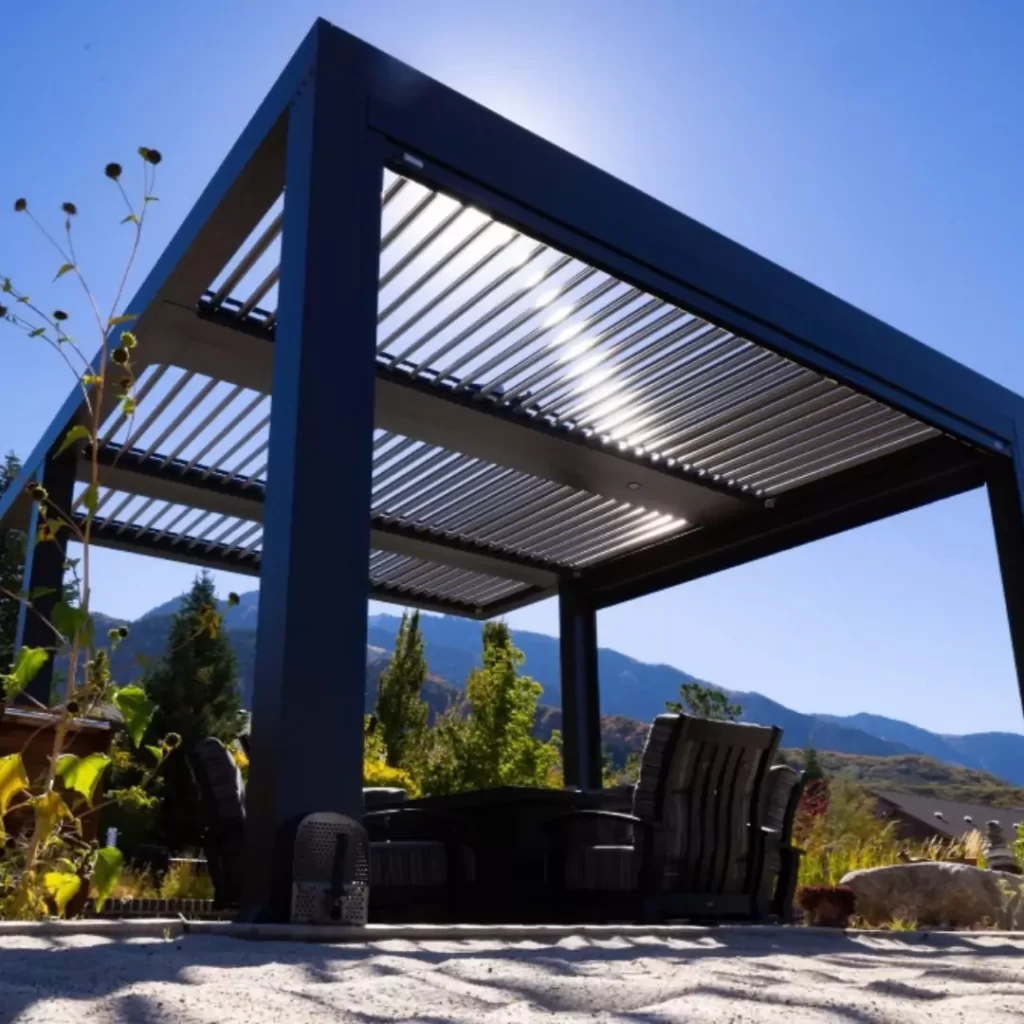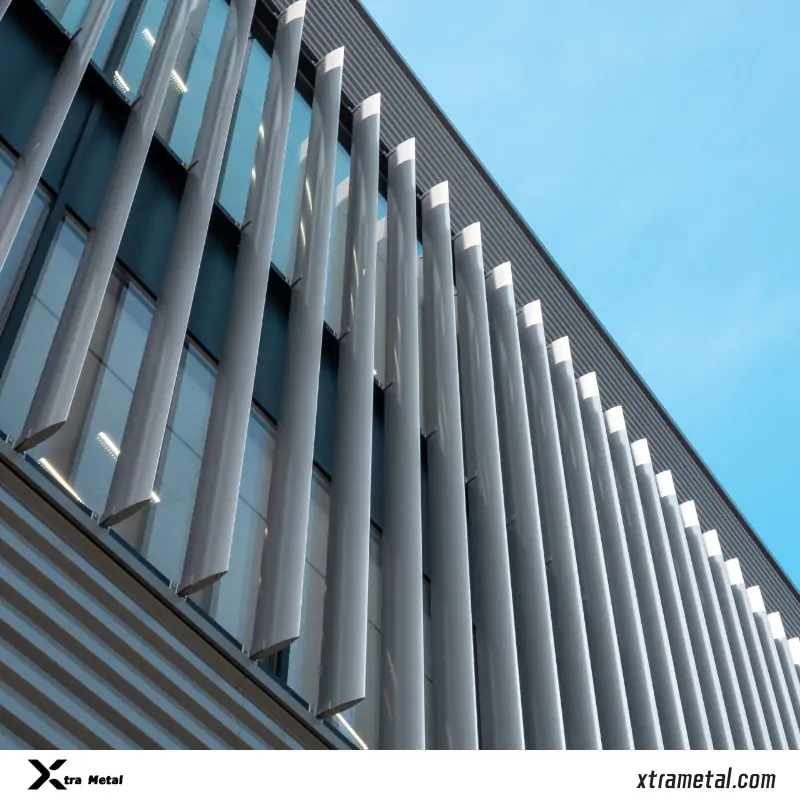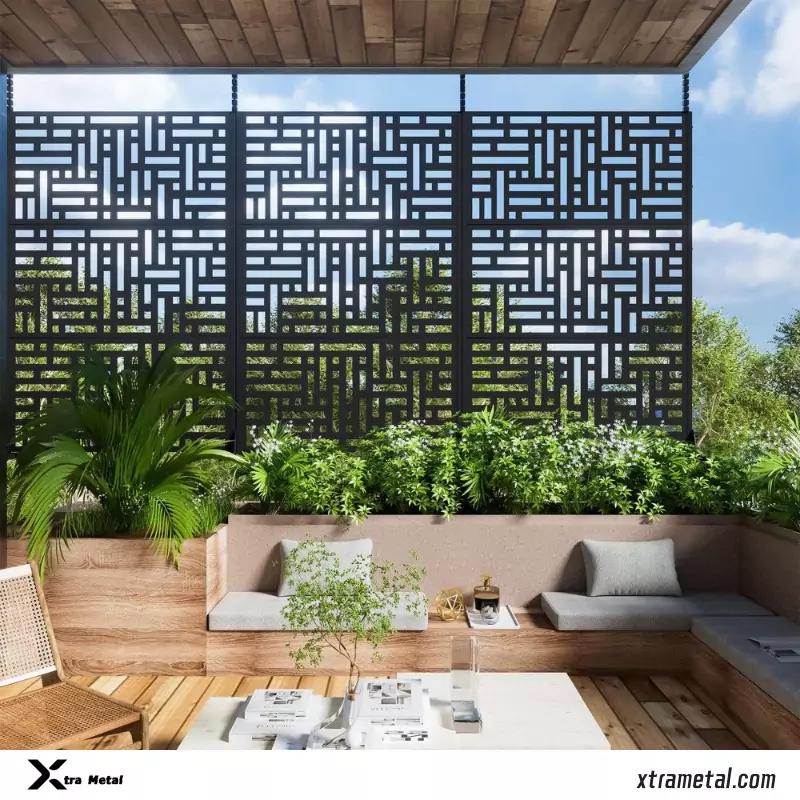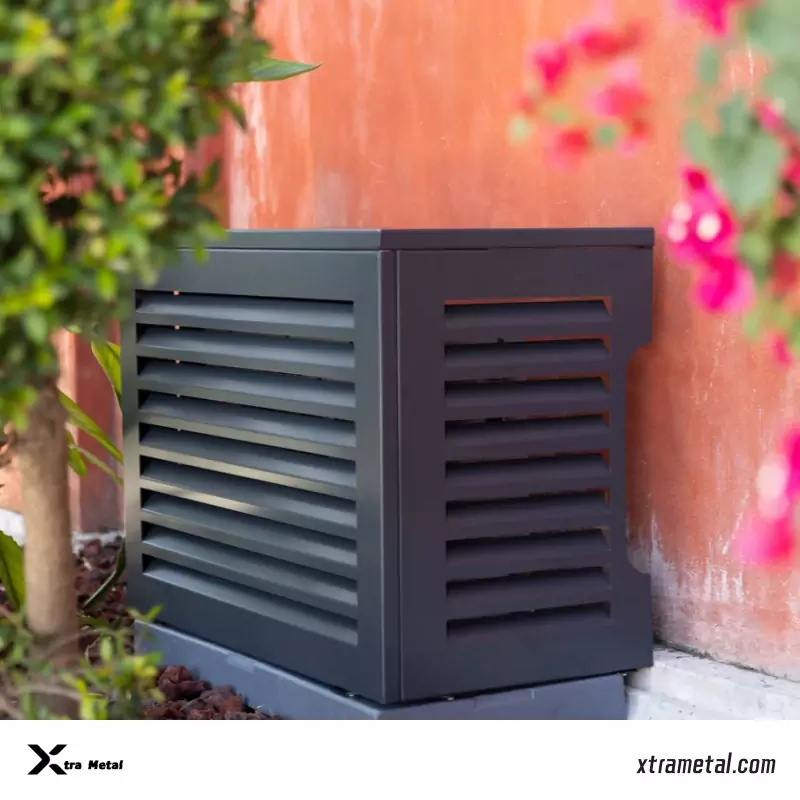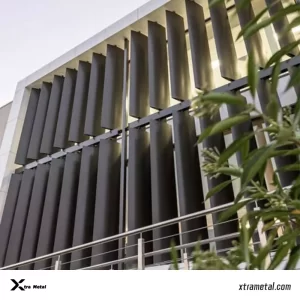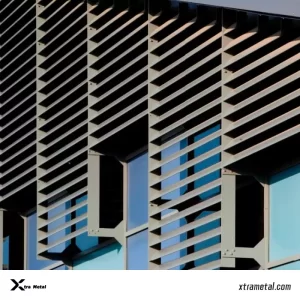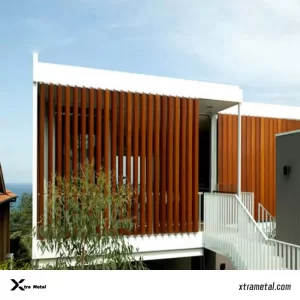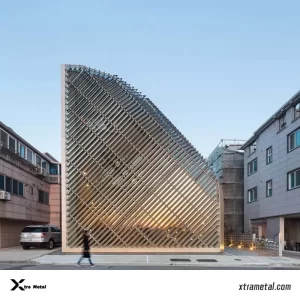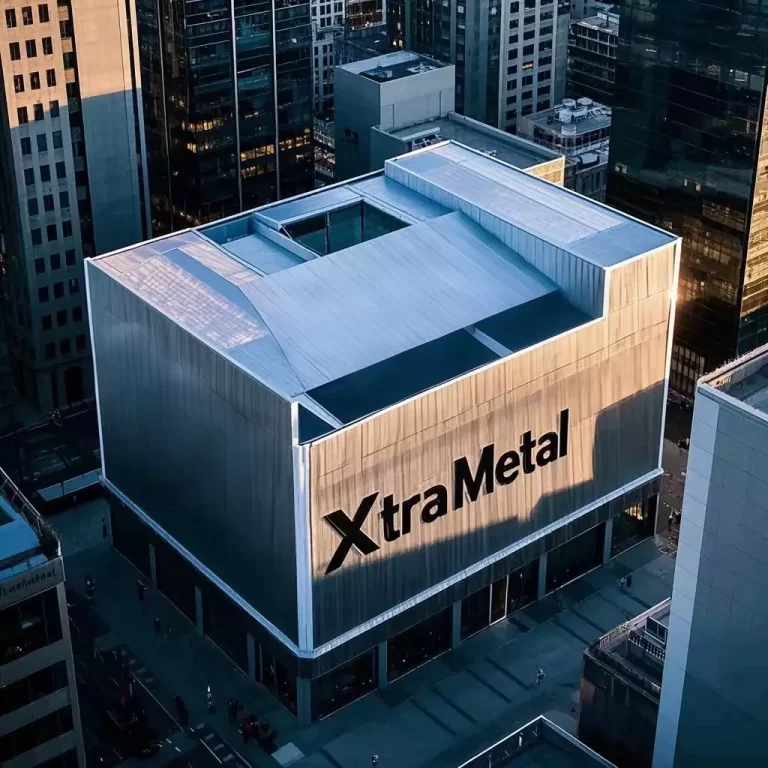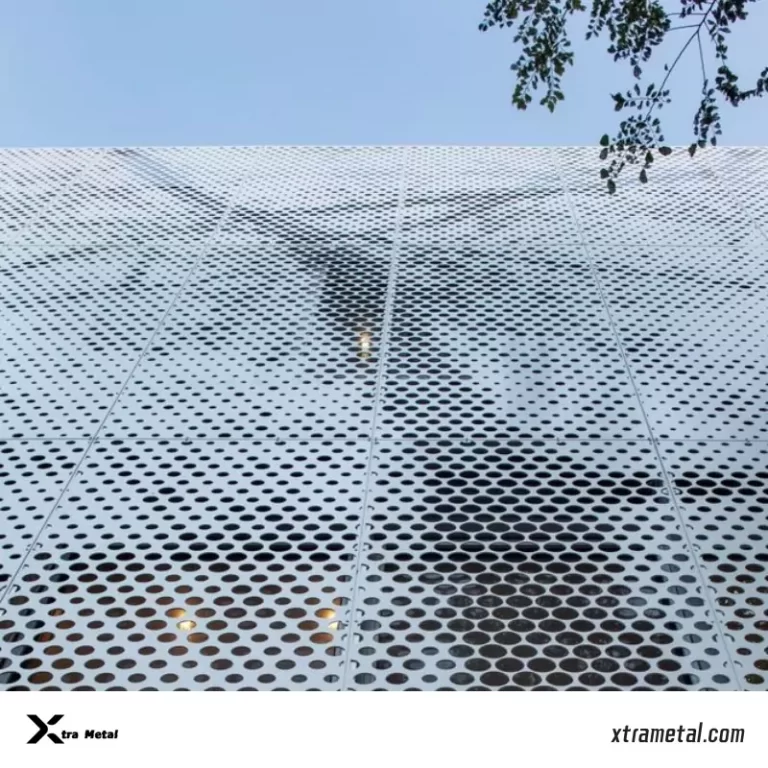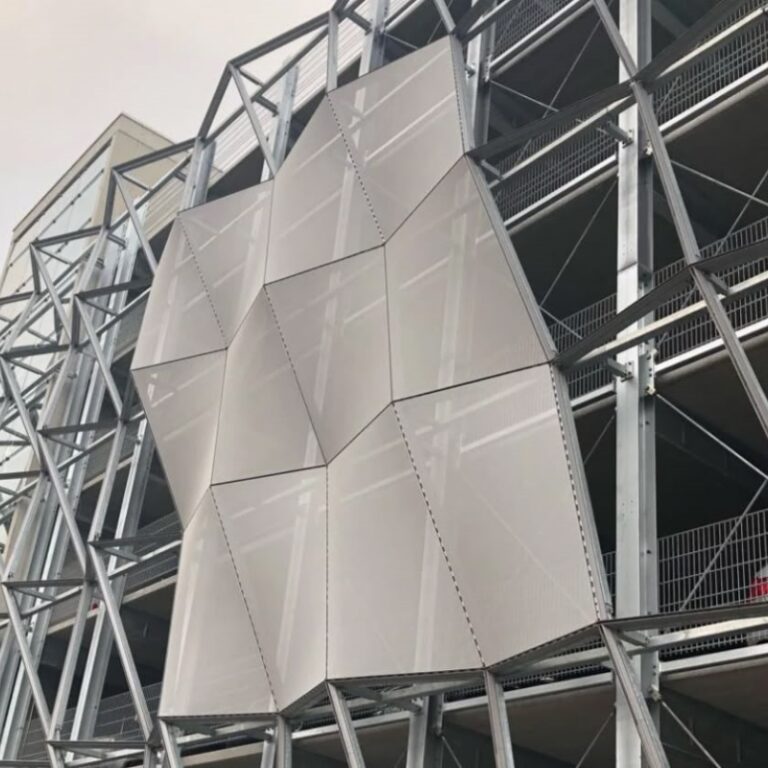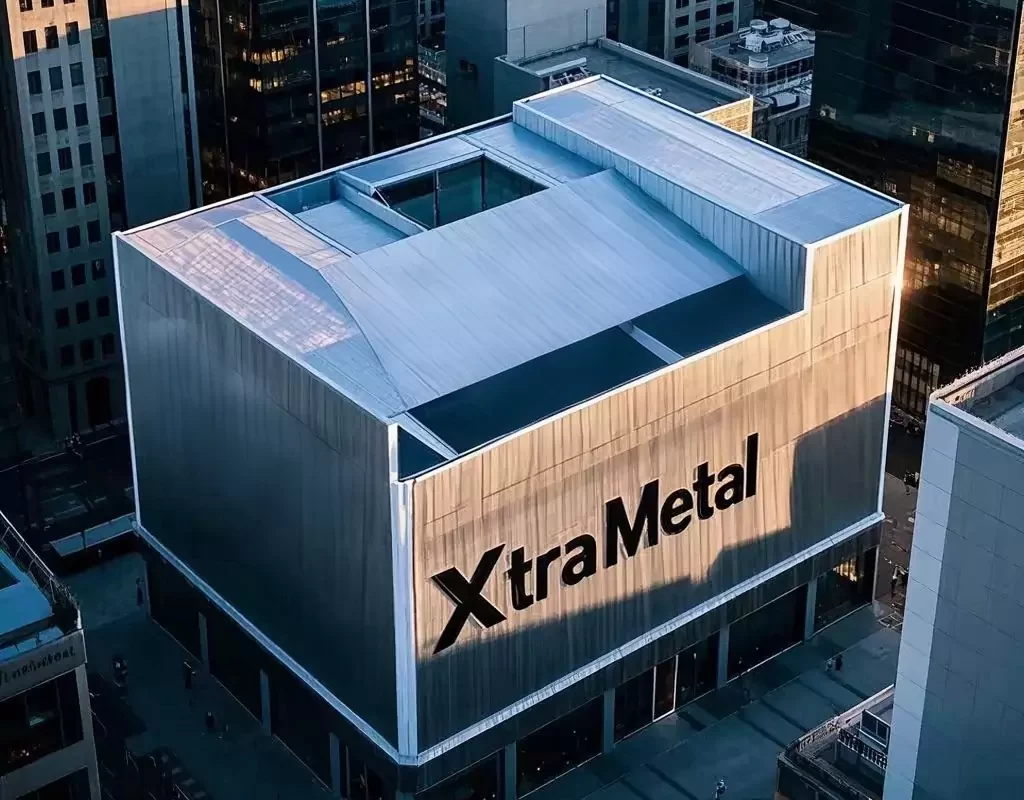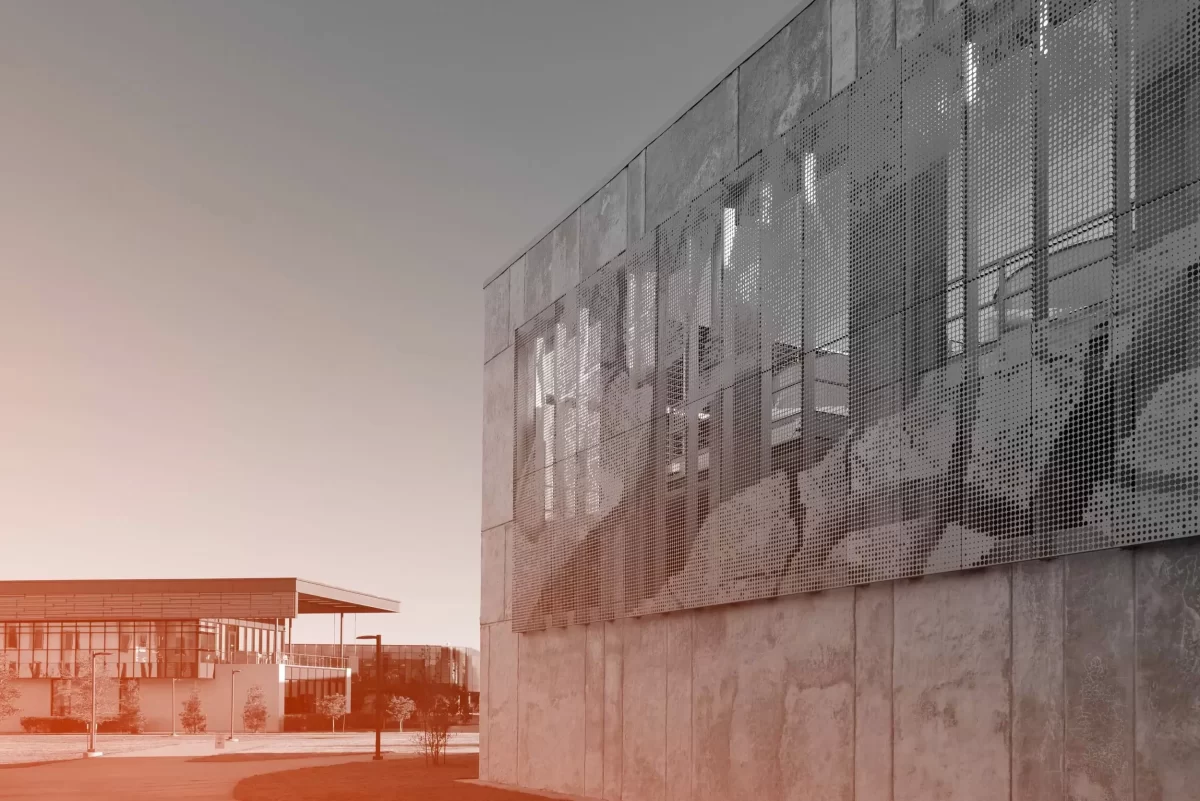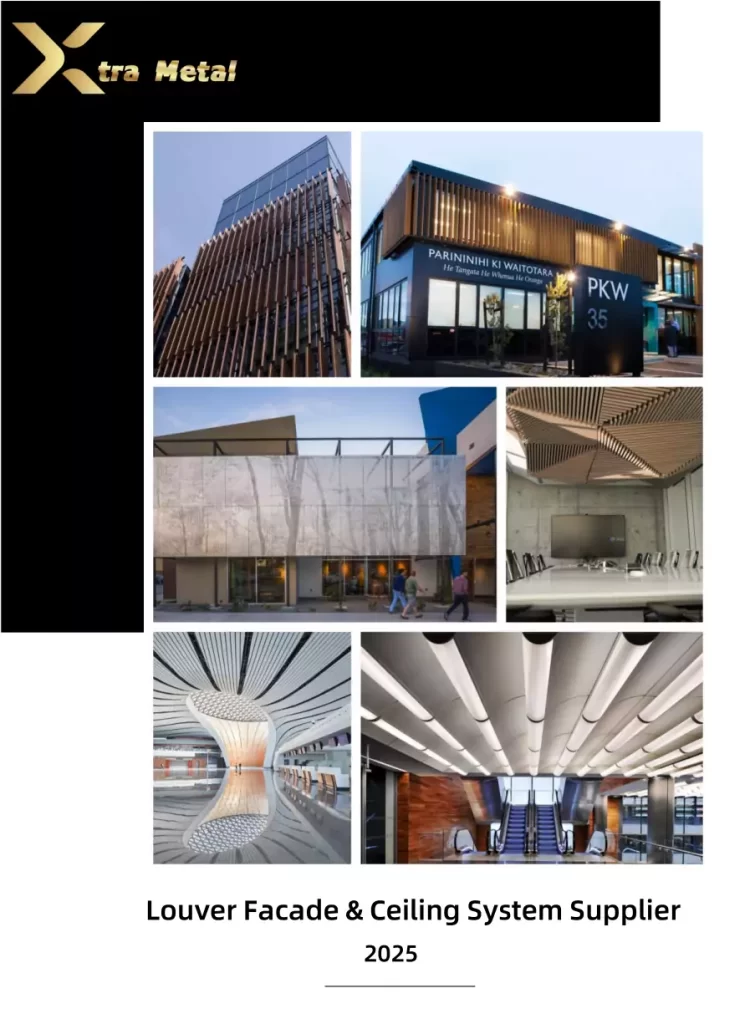Horizontal louvers are a common and popular type of louver facade. They serve some really important functions, and more than just a design choice. They’re practical tools that help control light, manage airflow, and even protect buildings from the weather.
The History of Louvers
Louvers actually got their start way back in the Middle Ages! Imagine large kitchens with open roof holes – louvers were first simple wooden or pottery structures placed over these holes. They let smoke and steam out while keeping rain and snow from getting in.
Over time, these evolved from basic barrel-like shapes to more complex designs, eventually leading to the adjustable shutters and fixed architectural elements we see today. You can learn more about their origins here: Louver – Wikipedia.
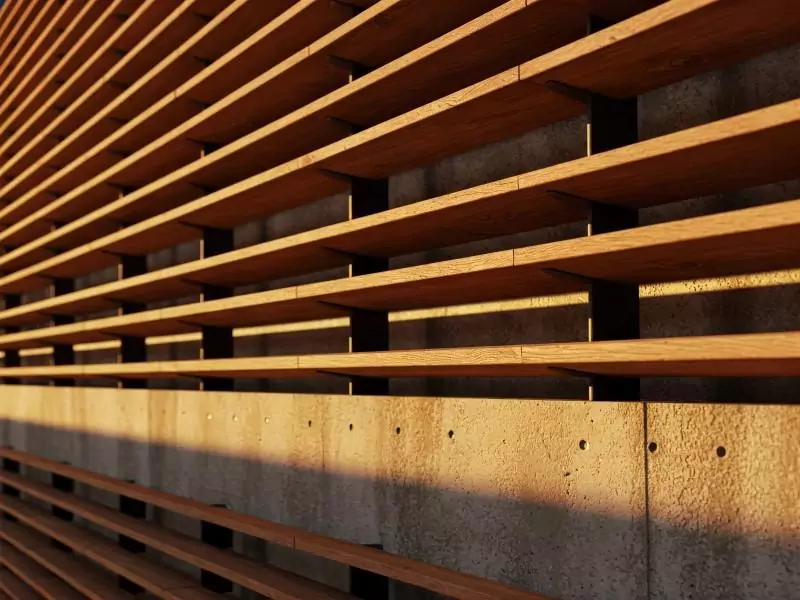
What Do Horizontal Louvers Actually Do?
At their core, horizontal louvers are designed to perform a few key jobs:
1. Manage Natural Light: The angled slats block harsh, direct sunlight (especially when the sun is high) while still letting softer, indirect light filter through. This reduces glare inside buildings.
2. Improve Airflow: They allow air to pass through, which is essential for natural ventilation or for letting HVAC systems breathe properly.
3. Add Visual Appeal: Louvers create clean lines and add texture to building exteriors, contributing to the overall architectural design.
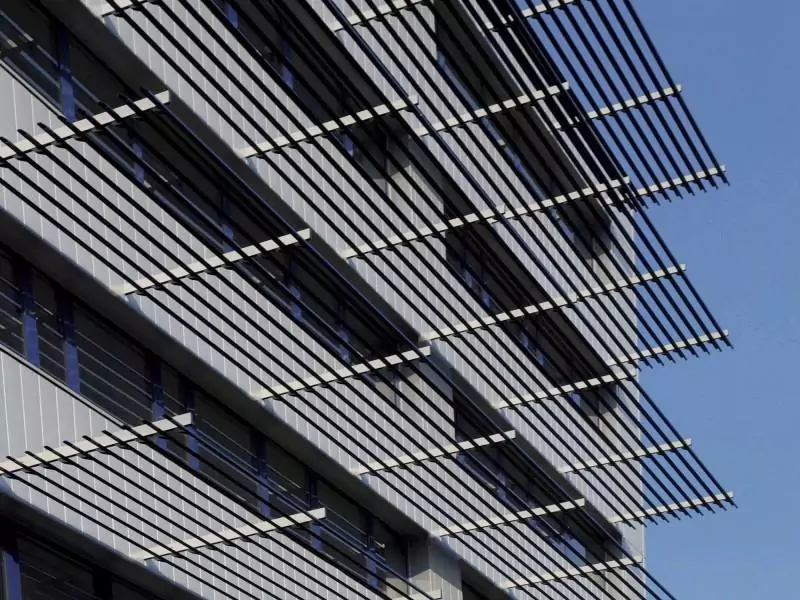
Types of Horizontal Louvers
Choosing the right louver facade starts with understanding your options. Horizontal louver come in a variety of styles and materials, each to suit your specific needs. If you want a comprehensive overview of the types of louver facade, you can check out our blog. However, to give you an overview, here is a breakdown of the types of horizontal louver to help you make your choice.
Fixed vs. Adjustable Louvers
· Fixed Louvers: These have stationary blades, perfect for consistent ventilation or light control. They’re simple, durable, and great for areas where conditions don’t change much.
· Adjustable Louvers: With blades you can tilt, these offer flexibility. Adjust them to control light or airflow based on the time of day or weather. Ideal for dynamic environments like offices or homes.
Drainable vs. Non-Drainable Louvers
· Drainable Louvers: Built with channels to direct water away, these are excellent for rainy climates. They prevent water from entering buildings, protecting interiors.
· Non-Drainable Louvers: Simpler in design, these let water pass through naturally. They’re suitable for areas with less rainfall or where water infiltration isn’t a concern.
Materials
The material you choose affects durability, maintenance, and aesthetics. Here’s a comparison:
| Material | Pros | Cons |
| Aluminum | Durable, lightweight, corrosion-resistant | Higher cost |
| Wood | Warm, traditional aesthetic | Needs regular maintenance, can warp |
| Vinyl | Low maintenance, cost-effective | Less durable, limited design options |
Aluminum: A top choice for its strength and weather resistance, aluminum louvers are ideal for long-lasting performance. At Xtra Metal Group, our aluminum louvers are customizable, letting you tailor designs to your project’s needs.
Wood: Wood louver facade offers a classic look but requires upkeep to prevent damage from moisture or pests.
Vinyl: Budget-friendly and easy to clean, but may not match the durability or style of aluminum or wood.
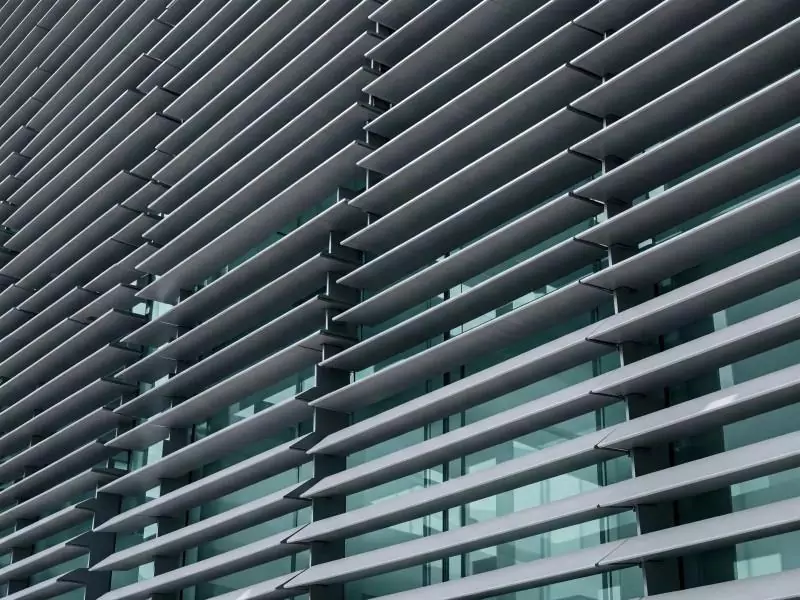
Choosing the right material often comes down to balancing budget, desired look, and long-term performance expectations. For demanding projects where quality and longevity are paramount, aluminum is frequently the preferred engineered solution.
Benefits of Horizontal Louvers
Why choose horizontal louvers for your project? They offer practical and aesthetic advantages that make them a smart investment.
· Light Control: Louvers reduce glare while letting in natural light, creating comfortable workspaces or homes. This can cut down on artificial lighting costs.
· Ventilation: By promoting airflow, louvers improve indoor air quality, reducing stuffiness and enhancing occupant comfort.
· Energy Efficiency: Louvers help regulate temperature, lowering heating and cooling costs. Studies suggest well-designed louver systems can save significant energy.
· Aesthetics: Their sleek lines and modern look elevate any building’s design, appealing to architects and clients alike.
5 common application scenarios of horizontal louvers
You’ll find horizontal louvers in many places:
· Architectural Facades: Integrated into the building’s exterior (horizontal louver facade) for sun control, ventilation, and aesthetics.
· Windows and Doors: Used as shutters or integrated elements for light control and privacy.
· HVAC Systems: Essential for air intake and exhaust points, allowing systems to breathe while protecting them from weather.
· Equipment Screens: Hiding unsightly mechanical units, generators, or utility areas.
· Decorative Uses: Sometimes used purely for visual effect in interior design or on furniture.
Design Considerations for Horizontal Louvers
Selecting the right louver involves more than just picking a type. Here’s what to keep in mind to ensure your choice fits your project.
Selection Criteria
· Application: Are you using louvers for ventilation, light control, or both? This determines whether fixed or adjustable is best.
· Climate: In rainy areas, opt for drainable louvers. In sunny climates, prioritize light control.
· Aesthetics: Choose a design that complements your building’s style (Architectural Louvers Co.).
Aesthetic Integration
Blending louvers into your design can be tricky, but it’s worth the effort. Consider:
· Color Matching: Coordinate louver colors with your building’s exterior for a cohesive look.
· Blade Spacing: Smaller spacing creates a denser, more private appearance, while wider spacing feels open.
· Material Choice: Aluminum offers a modern vibe, while wood suits traditional designs.
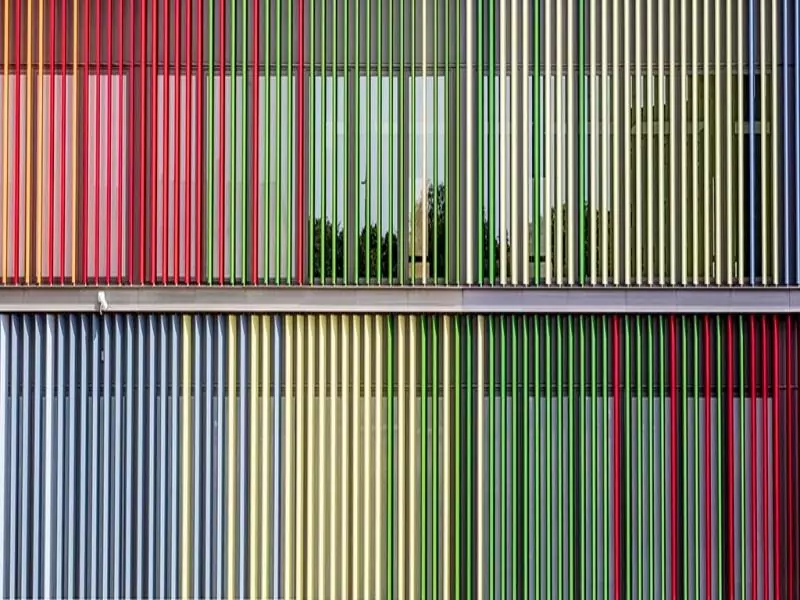
Installation and Maintenance
Proper installation and care ensure your louvers perform well for years. Here’s a practical guide.
Installation Guide
Installing louvers might seem daunting, but with the right steps, it’s manageable:
1. Measure the Area: Confirm the dimensions of the installation space.
2. Gather Tools: You’ll need a drill, screws, level, and mounting brackets.
3. Secure Brackets: Attach brackets to the building structure, ensuring they’re level.
4. Install Panels: Place louver panels into brackets and secure them.
5. Test Functionality: For adjustable louvers, check that blades move smoothly.
Maintenance Tips
· Aluminum: Clean with soap and water to remove dirt. Check for corrosion annually.
· Wood: Inspect for warping or rot. Apply sealant every 1-2 anos.
· Vinyl: Wash with mild detergent. Look for cracks in extreme weather.
Troubleshooting
· Creaking: Tighten loose screws or lubricate moving parts.
· Debris Buildup: Clear leaves or dirt to maintain airflow.
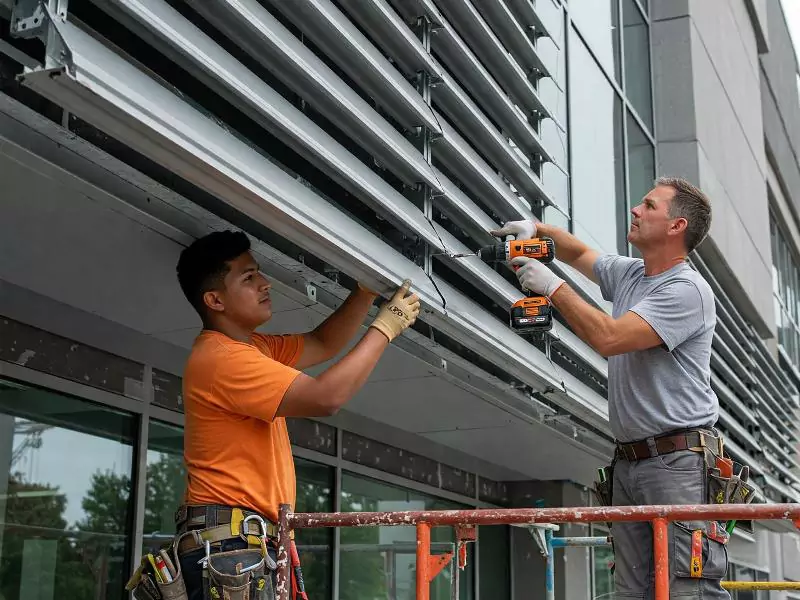
Perguntas frequentes (FAQs)
· Q: What is the main purpose of a horizontal louver?
o A: To control sunlight, allow airflow/ventilation, provide weather protection (especially rain), and offer visual screening or enhance aesthetics.4
· Q: Are horizontal louvers waterproof?
o A: They are water-resistant, designed to deflect rain, but not typically fully waterproof, especially against strong, wind-driven rain unless specifically designed and rated for it (like wind-driven rain louvers).7
· Q: How much do horizontal louvers cost?
o A: Costs vary widely based on material, size, finish, and features. Aluminum might range from $30-$80/㎡ per basic panel but can be higher for complex systems, while vinyl is often cheaper initially, and wood varies by type.9
· Q: Can I install horizontal louvers myself?
o A: Simple vents might be DIY-friendly, but larger panels, facade systems, or structural elements like fences often require professional installation for safety and proper performance.21
· Q: How much maintenance do they need?
o A: Aluminum and vinyl require minimal maintenance, mainly periodic cleaning.4 Wood requires regular sealing/staining. 12
· Q: Horizontal vs. Vertical Louvers – Which is better?
o A: It depends! Horizontal is great for blocking high sun and standard rain. Vertical is better for low sun angles (east/west walls) and resisting wind-driven rain.7
Conclusion: Elevate Your Project with Horizontal Louvers
Are you ready to spruce up your space with a horizontal louver? Horizontal louver really does add a different vibe to your space. When it comes to horizontal louver, the possibilities are endless.
Xtra Metal Group offers high-end custom louver solutions with over 30 years of expertise in metal building materials. If you’re looking for a quality, precise partner who understands the demands of modern construction, we’re here to help. Feel free to contact us to discuss your project needs!

